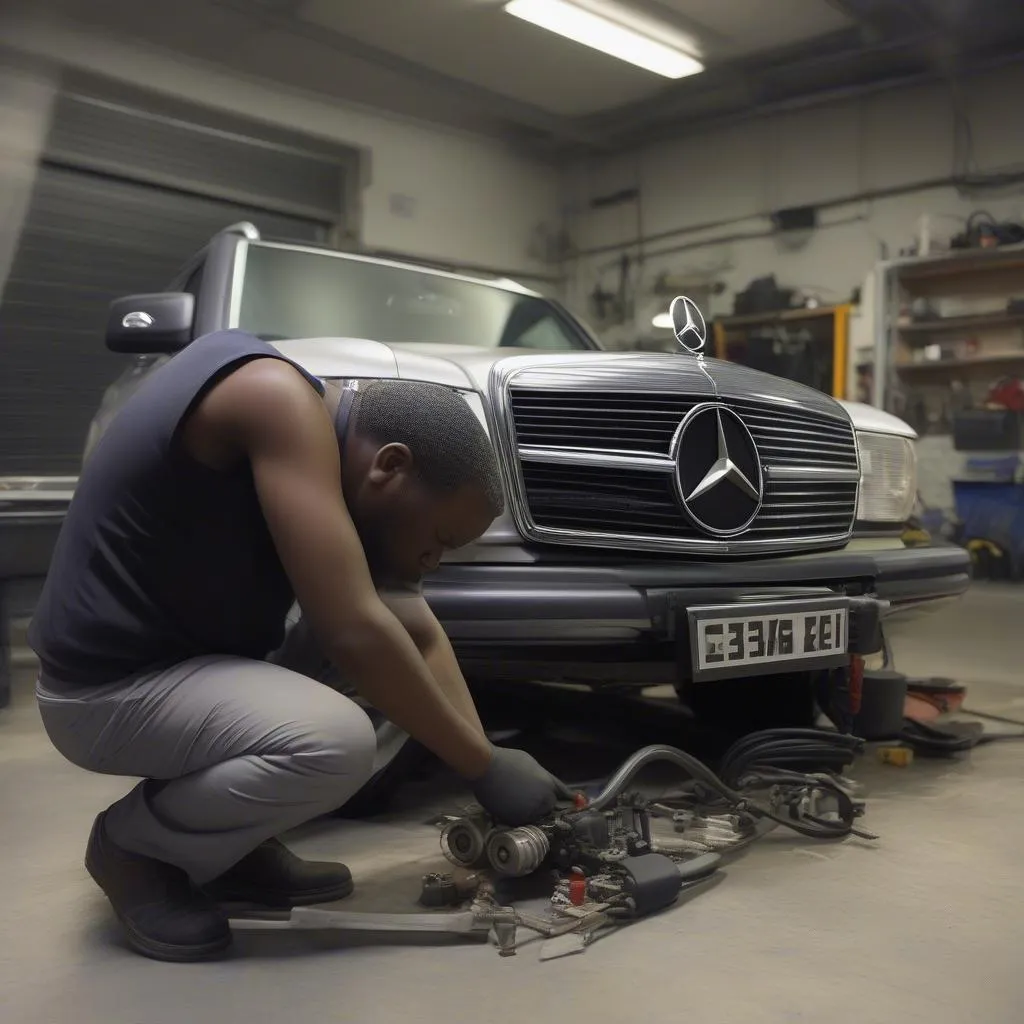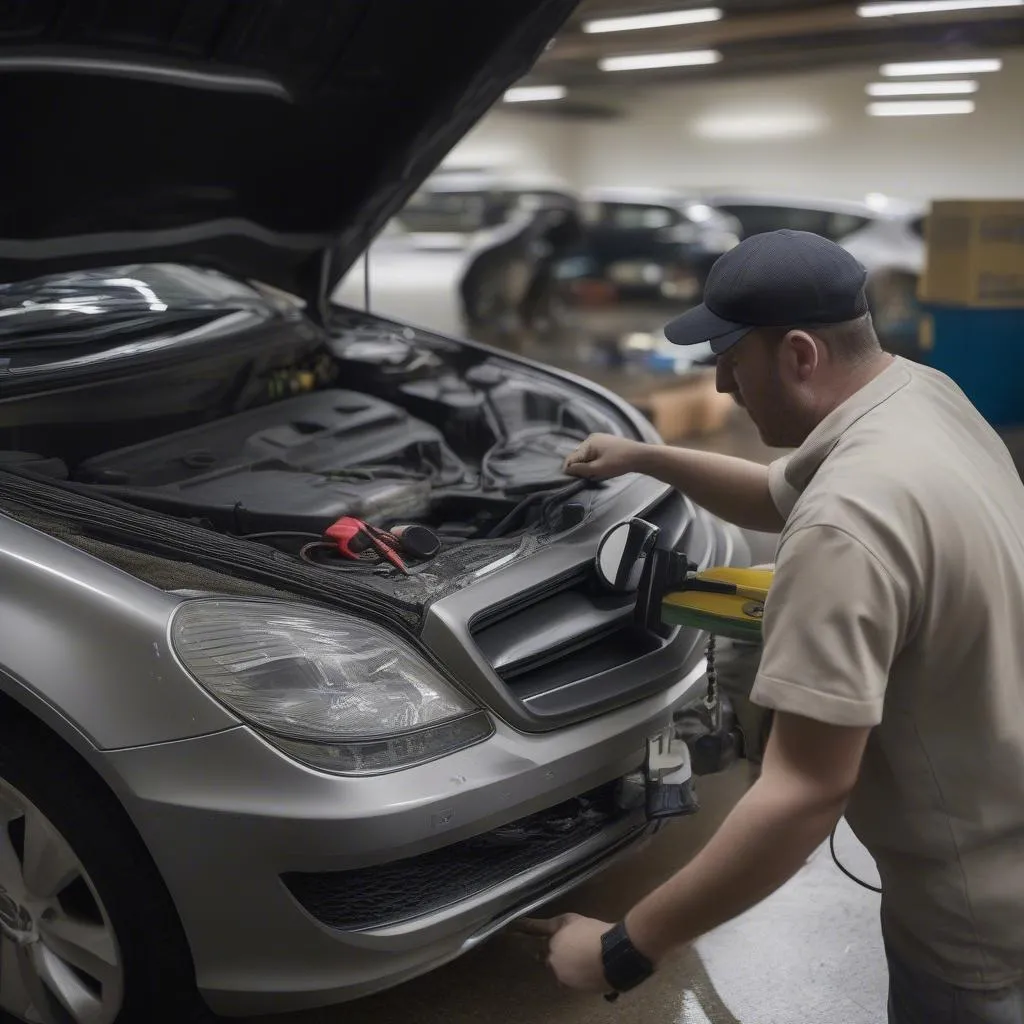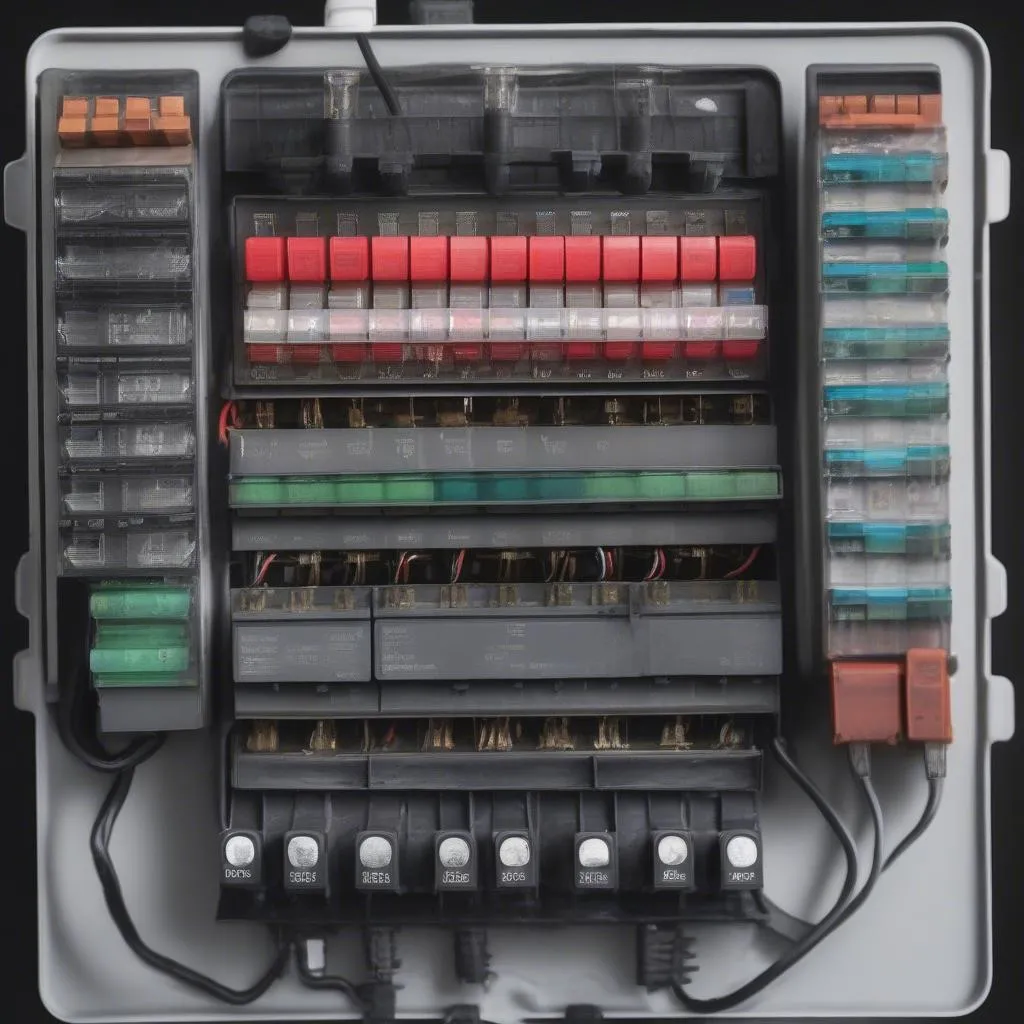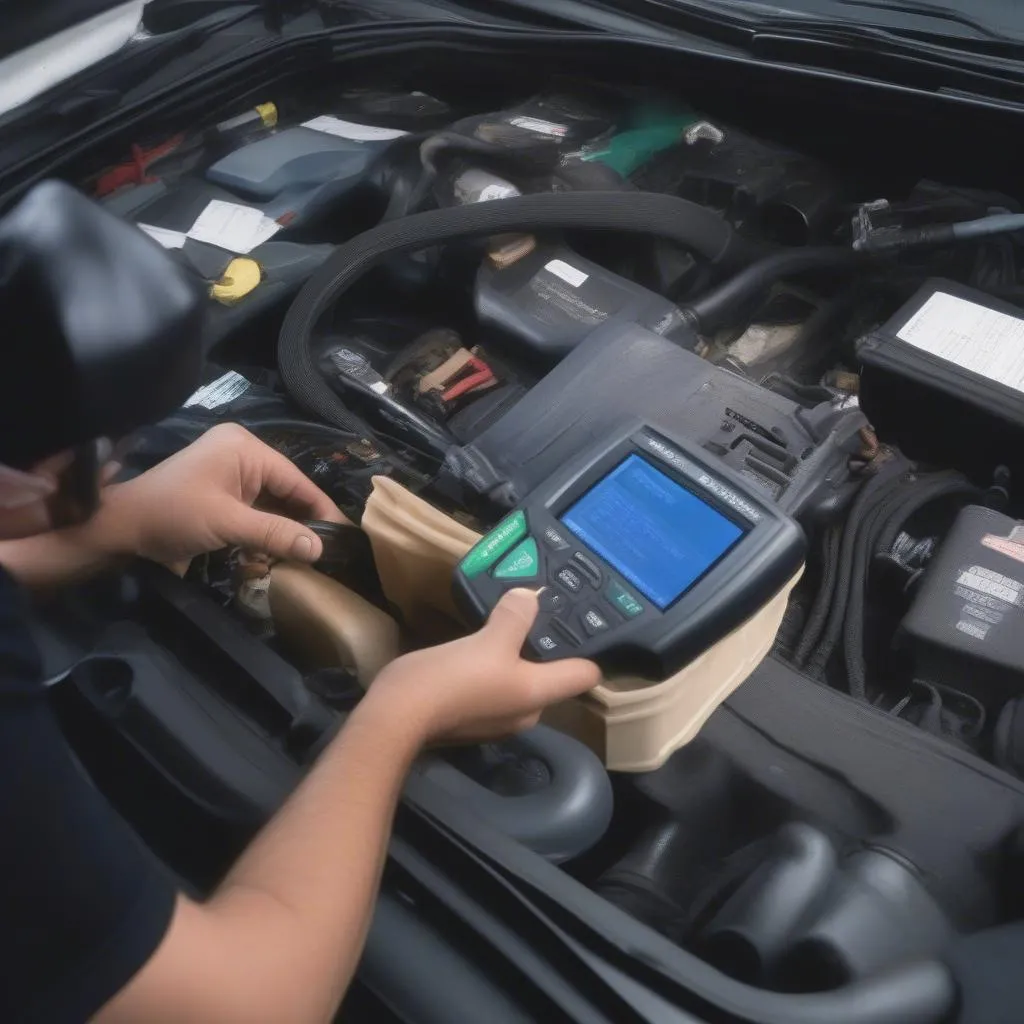Dealing with a flood-damaged car can be overwhelming, especially when it’s a sophisticated machine like a 2012 Mercedes-Benz E 550. While it might seem daunting, repairing a flood-damaged vehicle is possible with the right approach. This guide provides a step-by-step overview of fixing a flood-damaged 2012 Mercedes-Benz E 550.
Understanding the Impact of Flood Damage
Floodwater can wreak havoc on your car’s mechanical and electrical components. Understanding the extent of the damage is crucial before beginning any repairs.
Common Issues in Flood-Damaged Cars:
- Electrical System Malfunctions: Water and electronics are a disastrous mix, leading to short circuits, sensor failures, and complete system shutdowns.
- Engine Damage: Water ingested into the engine can cause hydrolock, leading to severe internal damage.
- Transmission Problems: Similar to the engine, water in the transmission can lead to gear slippage, shifting problems, and complete failure.
- Interior Damage: Floodwater often carries debris and contaminants, leading to mold growth, foul odors, and upholstery damage.
Identifying Flood Damage in a Used Car
Purchasing a used car always comes with risks, and flood damage can be challenging to detect. Here are some telltale signs to look out for:
- Musty Odor: A persistent damp smell, even after airing out the car, can indicate previous water damage.
- Water Stains: Check the carpet, floor mats, and upholstery for water lines or discoloration.
- Mud and Debris: Look for mud, silt, or debris in unusual places like the glove box, under the seats, or inside the trunk.
- Rust and Corrosion: Inspect metal parts like screws, brackets, and undercarriage components for signs of rust or corrosion.
Essential Tools and Equipment for Repair
Before diving into repairs, gather the necessary tools and equipment to ensure a smooth and efficient process:
- Protective Gear: Safety first! Always wear gloves, safety glasses, and a mask, especially when dealing with electrical components or cleaning up mold.
- Basic Hand Tools: A set of screwdrivers, wrenches, pliers, and sockets will be essential for disassembly and reassembly.
- Multimeter: This tool helps diagnose electrical issues by measuring voltage, resistance, and current.
- Automotive Scanner: A professional-grade automotive scanner, like those offered by CARDIAGTECH, can read and clear fault codes from the car’s computer, providing valuable insights into the damage.
- Cleaning Supplies: Industrial-strength cleaners, degreasers, and disinfectants are crucial for removing dirt, grime, and mold.
Repairing Your Flood-Damaged E 550: A Step-by-Step Guide
Remember, safety and precision are paramount throughout the repair process. If you’re uncertain about any step, consult a qualified mechanic.
-
Disconnect the Battery: This crucial first step prevents electrical shorts while working on the vehicle.
-
Assess the Damage: Thoroughly inspect all affected areas, taking pictures and notes to guide your repairs.
-
Drain and Dry: Remove standing water from the interior and engine bay. Use a wet/dry vacuum and towels to absorb excess moisture. Allow the vehicle to air dry thoroughly, preferably in a well-ventilated area with fans to expedite the process.
-
Electrical System Inspection and Repair: Inspect all wiring harnesses, connectors, and components for corrosion, damage, or water intrusion. Replace any compromised parts.
-
Engine and Transmission: If you suspect water damage, consult a qualified mechanic immediately. These complex systems require specialized knowledge and tools for proper repair.
-
Fuel System Flush: Drain and clean the fuel tank, lines, and injectors to remove any water or contaminants. Replace the fuel filter.
-
Brake System Inspection: Water can contaminate brake fluid, leading to reduced braking performance. Inspect, flush, and bleed the entire brake system.
-
Interior Cleaning and Restoration: Thoroughly clean and disinfect all interior surfaces to prevent mold growth. Shampoo carpets, clean upholstery, and replace damaged materials.
-
Reassemble and Test: Once all repairs are complete, reconnect the battery, refill fluids, and start the vehicle. Check for any warning lights or error codes.
 Mechanic Inspecting Engine
Mechanic Inspecting Engine
FAQs About Fixing Flood-Damaged Cars
Q: Can a flood-damaged car ever be the same?
A: With meticulous repair and restoration, a flood-damaged car can regain functionality. However, it’s essential to acknowledge that there might be lingering issues or a higher risk of future problems.
Q: How much does it cost to fix a flood-damaged car?
A: Repair costs vary widely depending on the severity of the damage, the make and model of the vehicle, and labor rates.
Q: Should I buy a flood-damaged car?
A: Purchasing a flood-damaged car is generally not recommended unless you’re a skilled mechanic willing to invest significant time and effort into repairs.
 Car Diagnostic Tool
Car Diagnostic Tool
Conclusion
Fixing a flood-damaged 2012 Mercedes-Benz E 550 is a challenging but manageable task. While some repairs can be tackled with basic mechanical skills, others require the expertise of a qualified mechanic. Remember to prioritize safety, use the right tools and techniques, and be patient throughout the process. If you’re unsure about any step, don’t hesitate to seek professional help.


